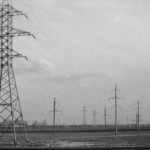Artificial Intelligence (AI) and Machine Learning (ML) have seen a significant rise in use over the last few years, having dramatically transformed industries across the board, with electrical engineering being no exception. From optimising energy management systems to enhancing substation designs, AI and ML are revolutionising how electrical engineering consultancies deliver solutions. In Australia, where energy infrastructure faces unique geographical and regulatory challenges, AI and ML provide unprecedented tools for engineering consultancies to stay at the forefront of design, efficiency, and sustainability.
Enhancing Design Efficiency and Accuracy
One of the most significant advantages of AI and ML is their ability to process large volumes of data quickly and accurately. In electrical engineering design, where precision is critical, these tools assist engineers in running complex simulations and analysing designs faster than traditional methods. For instance, in substation design projects, AI-driven software can streamline load flow studies, short-circuit analyses, and relay coordination, leading to more efficient designs. Machine learning algorithms can adapt and refine these processes over time, continuously improving the accuracy and efficiency of outputs based on historical data.
By integrating AI-driven tools, engineers can also reduce human error, minimise project timelines, and cut costs. This ability to iterate and refine designs quickly is especially valuable in Australia, where rigorous compliance with standards like AS/NZS 3000 (Wiring Rules) and AS 2067 (Substations and High Voltage Installations) is mandatory. Automating parts of the design validation process can ensure consistent adherence to these standards while also reducing workload for engineers, allowing them to focus on more complex and creative aspects of design.
Optimising Energy Management Systems
In Australia we have a power grid which is among the most extensive and complex in the world. The integration of renewable energy sources, coupled with the challenges posed by remote communities and aging infrastructure, makes efficient energy management essential. AI and ML play an important role in this domain by enabling predictive maintenance and optimising energy usage.
Using AI-powered algorithms, designers can help utilities predict demand patterns, identify areas with potential faults, and optimise energy distribution. For instance, ML algorithms can analyse historical data on energy consumption patterns to predict peak usage periods and advise on how to manage load distribution more effectively. This is particularly beneficial in Australia, where summer temperatures lead to high electricity demand for cooling, putting pressure on grid infrastructure. Machine learning models can suggest load adjustments in real-time to prevent overload and enhance grid reliability.
In addition to predicting demand, AI-based systems can also assist in asset management. For example, sensors placed on power transformers can collect data on variables like temperature and vibration, feeding it into an AI system that assesses potential maintenance needs. By identifying signs of wear or anomalies early, AI enables a shift from reactive to predictive maintenance, extending asset life and reducing the risk of unexpected breakdowns.
Improving Safety in Electrical Engineering Projects
Electrical engineering projects inherently carry safety risks, especially when dealing with high-voltage systems. AI and ML can help mitigate these risks through automated safety monitoring and compliance management. Advanced AI-driven software can scan for potential hazards in real-time during both the design and operational phases of a project. For example, an AI-based system can monitor for specific environmental conditions that increase risk, such as lightning strikes near substations, and suggest temporary shutdowns to prevent equipment damage or operator injury.
Machine learning algorithms also improve incident response times. By processing massive amounts of data from sensors and control systems, AI can detect irregularities and notify engineers in real-time. In emergency situations, such as a fault in high-voltage transmission lines, these algorithms can provide immediate analysis to guide engineers on the most effective response. This kind of proactive safety measure is invaluable in Australia, where extreme weather events like bushfires and storms pose unique risks to electrical infrastructure.
Facilitating Renewable Energy Integration
Australia is a global leader in renewable energy, with significant investments in solar, wind, and battery storage systems. However, integrating these renewable sources into the traditional power grid is complex and requires advanced engineering and management solutions. AI and ML can help facilitate this transition by optimising the integration and performance of renewable energy sources.
Machine learning algorithms, for example, can predict energy generation from renewable sources based on weather data. By analysing patterns in sunshine hours, wind speeds, and cloud cover, ML models can predict renewable energy outputs more accurately, allowing for better load balancing across the grid. Furthermore, AI-driven grid management systems can adjust for fluctuations in renewable energy output, ensuring consistent energy availability despite the intermittent nature of wind and solar energy.
AI also supports the design of microgrids, which are especially relevant for rural and remote communities in Australia. With ML-powered optimisation, engineers can help design these localised grids to maximise efficiency, reduce dependency on traditional power sources, and improve resilience in areas prone to outages.
Streamlining Project Management and Collaboration
Beyond technical applications, AI and ML can also streamline project management and enhance collaboration. AI-powered project management platforms offer real-time tracking, data sharing, and predictive insights to keep projects on schedule and within budget. These platforms can provide insights into resource allocation, budget spending, and timeline forecasts, making it easier for consultancies to manage large projects with multiple stakeholders.
For example, AI algorithms can predict delays based on previous project data, allowing project managers to proactively address potential bottlenecks. This is particularly useful in large-scale projects, such as substation design for utility companies, where delays can result in significant costs. Machine learning also helps teams collaborate by providing a centralised data repository, reducing miscommunication and ensuring that all team members have access to the latest project information.
The Future of AI and ML in Electrical Engineering: Opportunities and Challenges
As AI and ML continue to evolve, their applications in electrical engineering will only expand. Emerging fields, such as autonomous system design and quantum computing, may soon open new doors for electrical engineers. However, these advancements also bring challenges that will require careful consideration.
Data privacy and security are crucial issues when implementing AI solutions, especially in critical infrastructure sectors. Australian consultancies must comply with stringent data privacy regulations and ensure that their AI systems are secure against cyber threats. Ethical considerations are also important, particularly around the transparency and accountability of AI decision-making processes.
Furthermore, while AI offers numerous benefits, it does not replace the need for skilled engineers. Engineers are essential for validating AI-generated designs, ensuring that they meet the highest quality and safety standards. A balanced approach that combines AI-driven efficiency with human expertise will be crucial for the successful application of AI in electrical engineering.
AI and ML are reshaping the landscape of electrical engineering, offering engineers valuable tools to enhance efficiency, optimise energy systems, improve safety, and integrate renewable energy sources. By adopting these technologies, consultancies can not only improve project outcomes but also contribute to a more sustainable and resilient energy infrastructure in Australia.
As the field continues to advance, electrical engineering consultancies that embrace AI and ML will be better positioned to lead in innovation and excellence, delivering smarter, safer, and more sustainable solutions for Australia’s unique energy needs. The future of electrical engineering in Australia is bright, and AI and ML will undoubtedly play a pivotal role in shaping it.
Reading Time: 4 minutes






